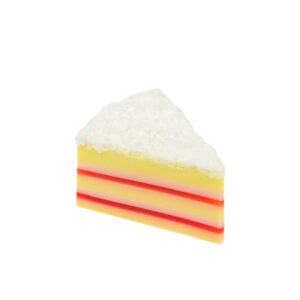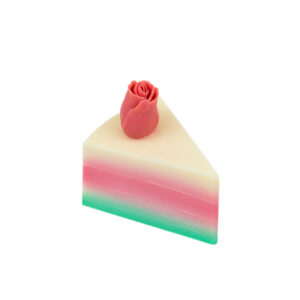

Cellulite is a prevalent skin condition that primarily affects the thighs, hips, buttocks, and abdomen. It manifests as dimpled, lumpy skin, often likened to the texture of cottage cheese or orange peel. This condition occurs when fat deposits push through the underlying connective tissue, resulting in a bumpy appearance.
Cellulite is more common in women than men, with an estimated 90% of women experiencing it at some point in their lives. The precise etiology of cellulite remains unclear, but it is believed to result from a combination of factors including hormones, genetics, lifestyle, and aging. Hormones such as estrogen and insulin are thought to influence cellulite development by affecting connective tissue structure and fat accumulation.
Genetic predisposition also plays a significant role in cellulite formation. Lifestyle factors, including poor diet, lack of exercise, smoking, and stress, can contribute to the development and severity of cellulite. Additionally, the natural aging process, which leads to decreased skin elasticity and thinning, can exacerbate the appearance of cellulite.
While cellulite is not a harmful medical condition, it can impact self-esteem and body image. Although it is not indicative of poor health, many individuals seek treatment to reduce its appearance for cosmetic reasons. Understanding the causes and contributing factors of cellulite is crucial for developing effective strategies to address this common concern.
A healthy diet that is low in processed foods, sugar, and saturated fats can help prevent the accumulation of excess fat and improve overall skin health. Incorporating plenty of fruits, vegetables, lean proteins, and whole grains into your diet can help maintain a healthy weight and reduce the appearance of cellulite.
Additionally, staying hydrated by drinking plenty of water can help improve skin elasticity and reduce the appearance of cellulite. Regular exercise is also essential for managing cellulite. Engaging in cardiovascular activities such as running, cycling, or swimming can help burn excess fat and improve circulation, which can reduce the appearance of cellulite.
Strength training exercises that target the muscles in the thighs, hips, buttocks, and abdomen can help tone and firm the skin, making cellulite less noticeable. Incorporating a combination of aerobic and strength training exercises into your routine can help improve overall body composition and reduce the appearance of cellulite.
In addition to diet and exercise, maintaining a healthy lifestyle by avoiding smoking and excessive alcohol consumption can also contribute to reducing the appearance of cellulite. Making these lifestyle changes can help improve overall health and well-being while also addressing the underlying causes of cellulite.

Topical treatments such as creams, gels, and serums are popular options for addressing the appearance of cellulite. These products often contain ingredients such as caffeine, retinol, antioxidants, and herbal extracts that are believed to improve circulation, promote collagen production, and reduce inflammation in the skin. While these products may not completely eliminate cellulite, they can help improve the texture and appearance of the skin.
Caffeine is a common ingredient found in many cellulite creams and gels due to its ability to improve blood flow and reduce fluid retention in the skin. This can help temporarily tighten and smooth the skin, making cellulite less noticeable. Retinol, a form of vitamin A, is another popular ingredient in topical treatments for cellulite.
It is believed to promote collagen production and improve skin elasticity, which can help reduce the appearance of cellulite over time. Antioxidants such as vitamin C and E are also commonly found in cellulite creams and serums due to their ability to protect the skin from damage caused by free radicals. Herbal extracts such as green tea, ginkgo biloba, and horse chestnut are also believed to have anti-inflammatory properties that can help reduce swelling and improve circulation in the skin.
While topical treatments can provide temporary improvements in the appearance of cellulite, they are most effective when used in conjunction with a healthy diet and regular exercise routine. It is important to be consistent with the use of these products to see results, as they typically require continued use to maintain their effects.
| Treatment Type | Benefits | Duration |
|---|---|---|
| Laser Therapy | Reduces hair growth, treats acne, diminishes scars | Varies depending on the area being treated |
| Body Contouring | Reduces fat, tightens skin, improves body shape | Several sessions over a few weeks |
For those seeking more advanced options for treating cellulite, professional treatments such as laser therapy and body contouring procedures are available. Laser therapy involves using laser energy to target and break down fat cells beneath the skin, which can help reduce the appearance of cellulite. This treatment also stimulates collagen production, which can improve skin elasticity and texture over time.
Body contouring procedures such as radiofrequency therapy and ultrasound therapy are also popular options for reducing the appearance of cellulite. These treatments use energy-based devices to heat the skin and target fat cells, which can help tighten and smooth the skin while reducing the appearance of cellulite. These procedures are typically performed by trained professionals and may require multiple sessions to achieve optimal results.
Another professional treatment option for cellulite is injectable therapies such as mesotherapy or lipolysis. These treatments involve injecting a solution directly into the affected areas to break down fat cells and improve circulation in the skin. While these procedures can be effective in reducing the appearance of cellulite, they may carry more risks and potential side effects compared to other treatment options.
It is important to consult with a qualified healthcare professional to determine which professional treatment option is best suited for your individual needs and goals. While these treatments can provide significant improvements in the appearance of cellulite, they are often more costly and may require downtime for recovery compared to other treatment options.
Massage therapy and dry brushing are natural remedies that are often used to reduce the appearance of cellulite. Massage therapy involves using manual manipulation techniques to stimulate circulation, break down fat deposits, and improve lymphatic drainage in the affected areas. This can help reduce fluid retention and improve the texture of the skin, making cellulite less noticeable.
Dry brushing is another popular natural remedy for cellulite that involves using a dry brush with firm bristles to exfoliate the skin and stimulate circulation. This technique is believed to help break up fat deposits beneath the skin while promoting lymphatic drainage and detoxification. Regular dry brushing can help improve skin tone and texture while reducing the appearance of cellulite over time.
In addition to massage therapy and dry brushing, body wraps and scrubs are also commonly used as natural remedies for cellulite. These treatments often involve applying a combination of natural ingredients such as coffee grounds, seaweed, clay, or essential oils to the skin to exfoliate, detoxify, and improve circulation. While these natural remedies may provide temporary improvements in the appearance of cellulite, they are most effective when used in conjunction with a healthy diet and regular exercise routine.

Avoiding smoking and excessive alcohol consumption can help improve overall skin health while reducing inflammation and fluid retention in the body. Maintaining a healthy weight through diet and exercise can also help prevent the accumulation of excess fat that can contribute to the development of cellulite.
Wearing loose-fitting clothing made from breathable fabrics can help improve circulation and reduce pressure on the skin, which can help prevent the development or worsening of cellulite. Additionally, practicing stress-reducing techniques such as yoga, meditation, or deep breathing exercises can help lower cortisol levels in the body, which can contribute to the development of cellulite.
Incorporating foods rich in antioxidants such as fruits, vegetables, nuts, and seeds into your diet can help protect the skin from damage caused by free radicals while promoting collagen production and improving skin elasticity. Staying hydrated by drinking plenty of water throughout the day can also help flush out toxins from the body while improving overall skin health.
Genetics play a significant role in determining an individual’s predisposition to developing cellulite. Some people may be more genetically prone to developing cellulite due to factors such as skin structure, fat distribution, metabolism, and hormonal balance. While genetics cannot be changed, understanding your genetic predisposition to developing cellulite can help you make informed decisions about lifestyle choices and treatment options.
Hormones such as estrogen and insulin are also believed to play a role in the development of cellulite. Estrogen is thought to affect the structure of connective tissue beneath the skin while promoting fat storage in areas such as the thighs, hips, buttocks, and abdomen. Insulin, a hormone that regulates blood sugar levels, can also affect fat storage in the body while promoting inflammation and fluid retention that can contribute to the development of cellulite.
While genetics and hormones play significant roles in the development of cellulite, making healthy lifestyle choices such as maintaining a balanced diet, regular exercise routine, staying hydrated, avoiding smoking and excessive alcohol consumption can help manage these factors while reducing the appearance of cellulite. Understanding how genetics and hormones contribute to cellulite formation can help individuals make informed decisions about treatment options while promoting overall health and well-being. In conclusion, understanding what cellulite is and why it occurs is essential in developing an effective treatment plan to address this common concern.
Diet and exercise play a crucial role in managing and reducing the appearance of cellulite by maintaining a healthy weight and improving overall skin health. Topical treatments such as creams, gels, and serums can provide temporary improvements in the appearance of cellulite when used consistently with a healthy lifestyle. Professional treatments such as laser therapy and body contouring procedures offer more advanced options for reducing the appearance of cellulite but may require more significant investment in terms of cost and recovery time.
Natural remedies such as massage therapy, dry brushing, body wraps, and scrubs can also provide temporary improvements in the appearance of cellulite when used in conjunction with a healthy lifestyle. Making simple lifestyle changes such as avoiding smoking and excessive alcohol consumption while maintaining a healthy weight through diet and exercise can also help reduce the appearance of cellulite over time. Understanding how genetics and hormones contribute to cellulite formation can help individuals make informed decisions about treatment options while promoting overall health and well-being.
If you’re looking for the perfect gift for mom this Mother’s Day, consider treating her to a luxurious anti-cellulite treatment from La Savonnerie Divine. Their unique gifts for mom are sure to make her feel pampered and appreciated. And while you’re at it, why not add a bath bomb to her gift? According to a recent article on their website, bath bombs are one of the top trends for 2024 and beyond, making them the perfect addition to any spa day gift. (source)
Anti-cellulite treatments are procedures or products designed to reduce the appearance of cellulite, which is the dimpled, lumpy appearance of the skin, usually on the thighs, hips, buttocks, and abdomen.
Anti-cellulite treatments work in various ways, such as improving circulation, breaking down fat cells, stimulating collagen production, and smoothing the skin’s texture. Some treatments may also target fluid retention and inflammation.
Common types of anti-cellulite treatments include massage techniques, topical creams and lotions, laser therapy, radiofrequency treatments, acoustic wave therapy, and minimally invasive procedures such as subcision and vacuum-assisted precise tissue release (VATPR).
Most anti-cellulite treatments provide temporary improvements in the appearance of cellulite. Maintenance treatments may be necessary to sustain the results.
Many anti-cellulite treatments are considered safe when performed by qualified professionals. However, it’s important to consult with a healthcare provider before undergoing any treatment, especially if you have underlying health conditions.
Potential side effects of anti-cellulite treatments may include temporary redness, swelling, bruising, and discomfort at the treatment site. More invasive procedures may carry a higher risk of complications.
While some anti-cellulite treatments can significantly improve the appearance of cellulite, complete elimination may not be achievable for everyone. Results can vary depending on individual factors such as skin type, age, and the severity of cellulite.








Copyright © 2024 La Savonnerie Divine | Marketing & Design Geek in NY 🗽